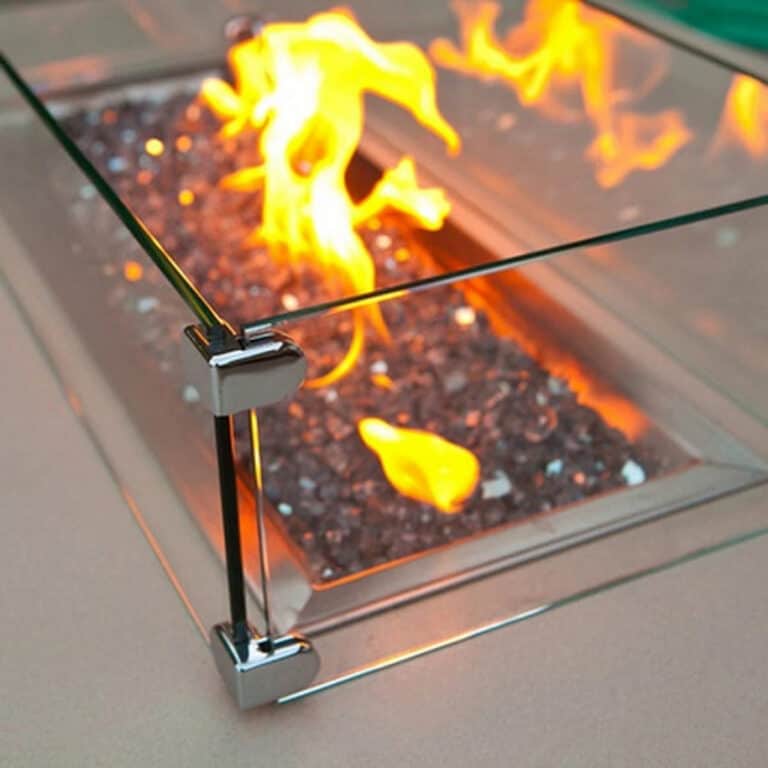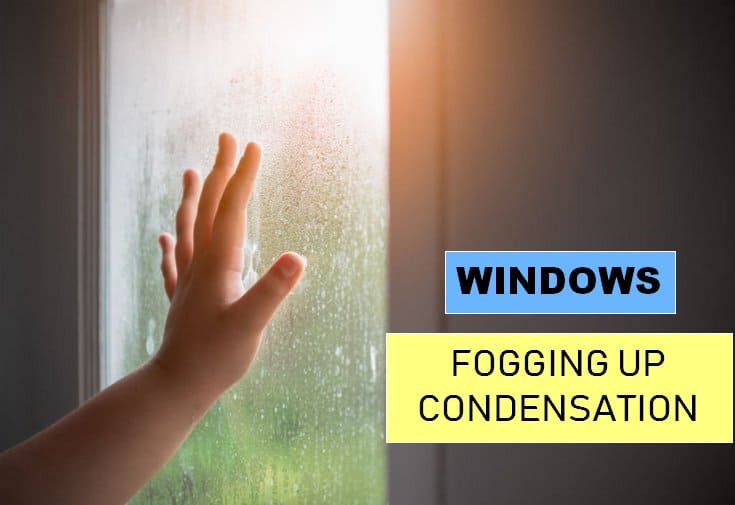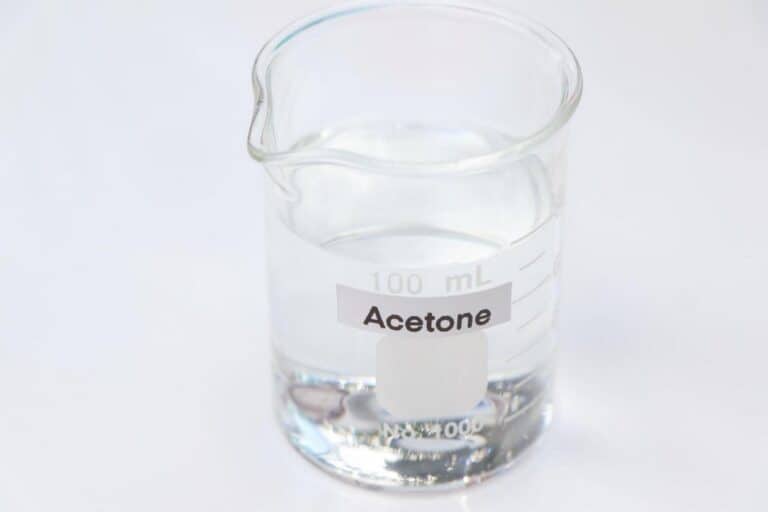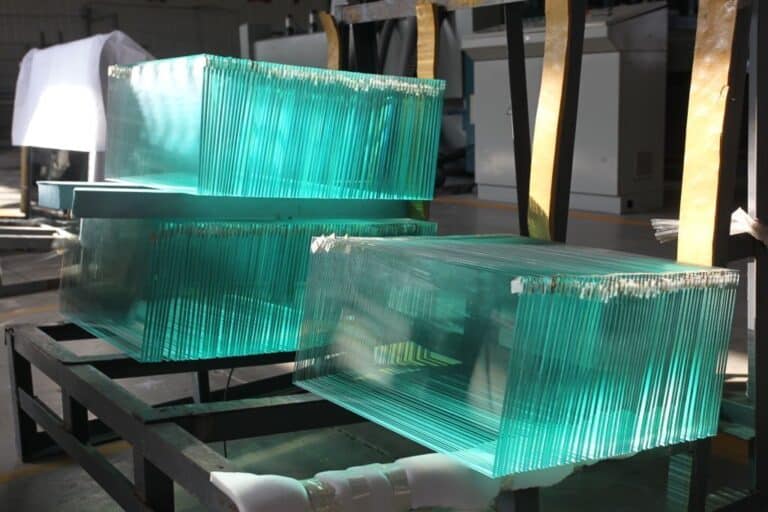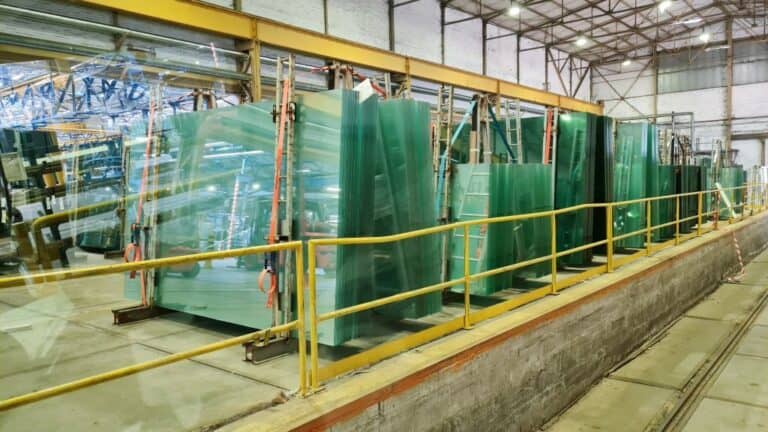What Is Annealed Glass? (Uses and Applications)
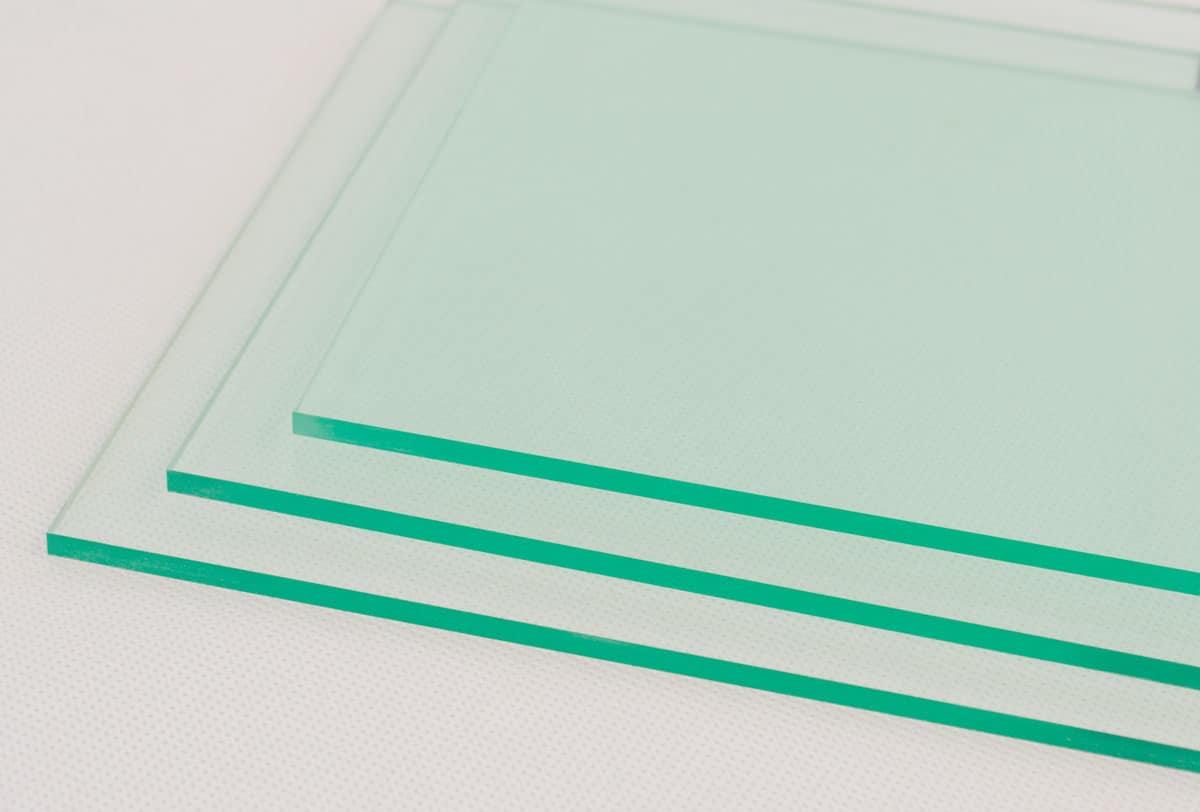
Glass is a material that has a long and rich history. Its first documented use was in Ancient Egypt, and it has been used for everything from windows to art over the years.
Glass is a material that has a long and rich history. Its first documented use was in Ancient Egypt, and it has been used for everything from windows to art over the years.
Glass is made by melting silica sand and soda-lime-silica at high temperatures until they form a liquid. The glass can then be formed into different shapes and cooled until it becomes solid.
Glass can be further processed in order to increase its strength and durability. One such glass that has been processed to customize consumer needs is annealed glass.
In this article, we will explore what annealed glass is. In addition to that, we will walk you through all the things you need to know about annealed glass uses and applications.
What is Annealed Glass?
Annealed glass is also known as ordinary glass. It is a basic product formed from float processed glass.
This type of glass is often used in areas where durability and resistance to temperature changes are needed. Such applications would include a variety of applications, including windows, doors, windshields, and cookware.
The Annealing Process in Making Glass
Annealing is a process in which glass is heated to high temperatures and then cooled slowly. This process strengthens the glass and makes it less likely to break.
To start the annealing process, first the glass is cooled to a temperature that permits the atoms to move freely while keeping the dimensions of the glass.
The glass is maintained at a constant temperature over a long period of time to achieve structural uniformity and reduce tensions. Temperature is tailored to each glass composition, and duration is regulated by each product’s physical form and shape.
Glass cools slowly between the strain temperature and the annealing temperature. This is the most crucial phase of the cooling procedure, as it must allow the exterior and interior of the glassware to cool at the same pace.
The atoms in the glass will rearrange themselves when it reaches the annealing temperature, which must be higher than the glass transition temperature.
As the temperature of the glass drops below the transition temperature and rises above the strain temperature, the atoms in the glass lattice become more stiff.
Does Annealing Result in an Increase in Strength?
While annealing can help to improve the strength of glass, it is not always guaranteed. In some cases, the opposite may actually happen, and the glass may become weaker.
Ultimately, whether or not annealing will result in an increase in annealed glass strength will depend on the type of glass being used and the specific circumstances surrounding its use.
What is Annealed Glass Used For (Applications)?
As previously mentioned, annealed glass can be utilized in a variety of applications. Here are some examples to help you understand the usage better.
1. Exterior Wall
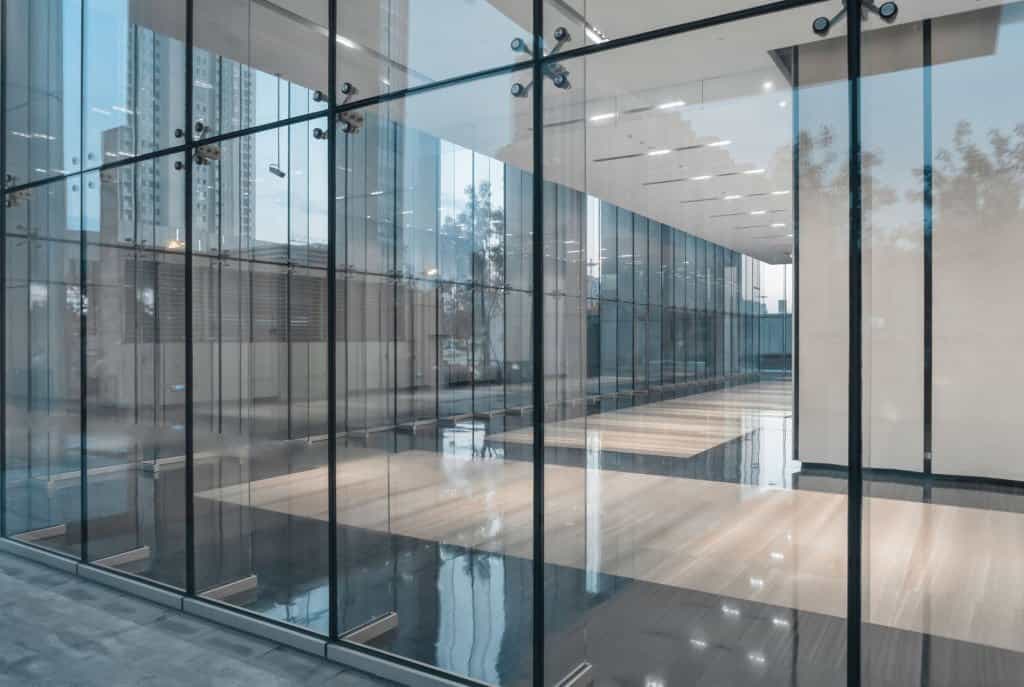
Annealed glass is a popular choice for interior and exterior home design. You may have seen annealed glass on the exterior walls of buildings. This sort of glass is typically used by designers for sliding walls to give brightness to a home.
The glass permits natural sunlight to penetrate into a room. Even though there isn’t much annealed glass, it does help by adding brightness.
You may tint annealed glass in the hope of providing an extra layer of privacy and insulation. This type of glass may absorb around 45 percent of the sun’s heat, making your home a bit cooler.
Additionally, annealed glass is utilized to connect outside patios or gardens to indoor spaces.
2. Reducing Light Transmission
Annealed glass is a great way to cut down on the amount of light that comes into a room. To put it more simply, glass can be a great way to spread light.
Not everyone likes having bright sunlight in their bedroom. If you are like me, you may use slightly tinted annealed glass in your windows if you like a darker environment.
You may also modify the tint level to control the quantity of light entering the interior area or room. The addition of tint to the window can further block unwanted UV rays from entering the home.
Annealed glass is an excellent option for creating a warm atmosphere in your bedroom. You may use it in the living room, the hallway, or anyplace you need a pleasant and tranquil atmosphere.
In addition to adjusting the amount of tint, you can also select the desired thickness, dimension, and even color.
3. Table Tops Glass
We’re sure you’ve seen glass on top of furniture. Glass is used as an added furniture enhancement in modern or traditional houses. Whether it’s a coffee table, a dining table, or even a reading table, putting a glass top on it may lend a lovely shine to your furniture.
These tabletops could be made of annealed glass, which is a good choice. It is possible to make the glass more glossy and shiny. Therefore, it may add a shiny finish to any piece of furniture.
Clear glass tabletops are a contemporary design element that helps to open up the space. In addition, glass table tops are timeless.
4. Bathroom Windows
Glass works equally well with both warm and cold colour combinations. This is the reason Glass’ products are so effective in all types of interior design.
Adding frosted annealed glass to your bathroom will make the interior design appear much more sophisticated, stylish, and appealing. Frosted annealed glass is the best option for bathroom windows since they also provide a small amount of seclusion.
| INFO |
|---|
| The rough surface of frosted annealed glass eliminates the product’s see-through aspect. Frosted annealed glass obscures the view. |
5. Shower Screens
Annealed glass can also be used to make shower screens in so many models and sizes. Depending on what you want, this glass can be either clear or frosted.
Clear annealed glass is often used as shower screens in hotels that are open to the public. The same material may be used for the same purpose in ordinary residential houses. The glass is reasonably priced.
If you’re looking for a sleek, modern look for your bathroom, annealed glass shower screens are a great option. Plus, they’re easy to clean and maintain.
6. Showcase glass
Trophies, photographs, and medals are frequently displayed in glass cases. You need a substance that is crystal clear to see these items clearly through the glass.
Annealed glass is an excellent choice for showcase glass. This glass is utilized by several galleries to display their artwork and miniature sculptures. The best glass to use for displays is often museum glass since it has an exceptional sheen and can provide higher-quality clarity than conservation glass.
7. Façade Glass for House
A glass exterior wall at the front is a great way to give your home a contemporary look. Adding an annealed glass facade might be an excellent choice if you wish to increase the amount of natural light and airflow.
Nowadays, many homeowners use glass for their house’s facade. Due to the fact that the material may be designed to be robust, it is well suited for the intended function.
How Can You Tell if Glass Is Annealed?
Knowing if the glass has been annealed or not is important when you are working with glass. Here are a few signs that a piece of glass has been annealed:
- To begin with, look for the glass surface. Check if it is transparent/clear or cloudy. Clear glass means it was annealed the right way, while cloudy glass means it wasn’t annealed the right way or at all.
- Then, lightly tap the glass with your finger or any small object. If the glass makes a dull sound, it has been annealed. If you hear there is a ringing noise, then it is not.
- Finally, bring the edge of the glass to your lips and softly breathe on it. It’s been annealed if moisture is visible. If there is no moisture present, the glass has not been annealed.
Annealed Glass Breaking and Durability
While annealed glass is durable and resistant to breaking, it is not unbreakable. If exposed to sudden changes in temperature or if struck with enough force, annealed glass can break.
Unlike laminated glass or tempered safety glass, annealed glass shatters into sharp glass fragments that can cause serious injury or even death if they fly through an incorrectly placed window. Annealed glass is capable of falling and causing cuts.
Comparing Annealed Glass vs. Tempered Glass
Glass is a brittle material that can easily be broken. To make glass more resistant to breaking, it is often strengthened with heat or cold.
When it comes to annealed glass vs. tempered glass, there are a few key differences that you need to be aware of. Annealed glass is more susceptible to breakage and shattering, whereas tempered glass is much stronger and more durable.
Annealed glass is made by heating the glass until it becomes soft and then cooling it down slowly. This process makes the glass more vulnerable to breaking and shattering, but also makes it easier to cut and shape.
Tempered glass, on the other hand, is made by heating the glass until it becomes soft and then cooling it down quickly. This process makes the glass much stronger and more durable, but also makes it more difficult to cut and shape.
Both glasses have different uses and applications. Annealed glass is more fragile but can be cut and molded into different shapes, making it ideal for stained-glass windows or bowls.
Tempered glass is four times stronger than annealed glass and is often used in high-stress situations, such as car windshields and shower doors.
Annealed Glass vs. Tempered Glass: Which One is Better?
Tempered glass is generally considered to be a better option than annealed glass because it has a higher resistance to scratches and breaks. Additionally, tempered glass can also withstand higher temperatures than annealed glass, which makes it more desirable in products that are exposed to high heat or cold.
Use of annealed glass is not advised if there is a possibility that someone could fall into the glass. The broken bits may pose serious risks. Also, you shouldn’t use annealed glass for things that could break easily. Otherwise, you would have to replace the glass on a regular basis, which would be quite expensive.


